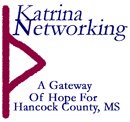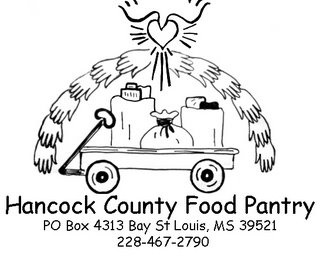11/2Concrete debris gets a second lifeBy RYAN LaFONTAINE
rlafontaine@sunherald.comHANCOCK COUNTY - Massive chunks of concrete debris are hardly a final solution to saving the state's eroding coastline, but it's a good start, according to U.S. Rep. Gene Taylor, D-Miss.
Taylor and officials from the state Department of Marine Resources boarded a boat Monday to check the status of several projects in which Katrina-related rubble is being used to protect the Coast from future storms or angry seas.
"There wasn't much good that came from the storm, but at least we were able to do something good with the concrete," Taylor said.
Since Katrina, Taylor's office has worked with local governments to store concrete refuse until it can be used for environmental projects, such as building a breakwater in Bayou Caddy and replenishing inshore fish and oyster reefs.
The Bayou Caddy breakwater was completed recently with concrete from the old U.S. 90 bridge over the Bay of St. Louis.
The Corps of Engineers eventually will build a U-shaped barrier from the shore to the concrete breakwater, and together, it will shield the state's second fastest eroding coastline from pounding wave energy and wicked storm surges.
Most of the bridge rubble is stuffed between concrete pilings that are visible from the Silver Slipper Casino. The pilings are from the Gulfport Seabee Base and have been driven about 40 feet below the ground to hold breakwater in place.
It's hard to tell that the mangled rocks, now nearly submerged in saltwater, were once part of the two-mile bridge that opened in 1953, two weeks before Taylor was born.
"I never thought I'd outlive that bridge," Taylor said, while looking down at the smashed rubble on Monday.
In addition to the barrier at Bayou Caddy, some of the bridge was used to replenish a Katrina-clobbered fishing reef near Square Handkerchief Key.
Taylor first led the construction of the reef, just south of the bay, in 2002 using concrete from the old eastbound Interstate 10 bridge over the Jourdan River.
Two years later, he helped double the size of the reef with concrete from the westbound span, and because of his work, the crescent-shaped reef has become unofficially known as Gene Taylor Key to many local anglers.
"When I was a kid, there was a natural reef out here," Taylor said. "Over time, the sand will build up around this concrete and it'll come back; it's also a great place to catch fish."
Taylor is working with state and federal agencies on a similar project near Deer Island in Biloxi, using the remains of the old Biloxi-Ocean Springs bridge.
According to the Labor Department's Producer Price Index, concrete prices jumped 10.5 percent in one year. Rising energy prices are turning concrete into gold and creating a mad rush of entrepreneurs hoping to garner as much as they can, crush it into small bits and then resell it for a profit.
Taylor is urging local governments to store scrap concrete until it can be recycled for other fishing reefs or to help shield the state's corroding coastline.
"Environmentally, this is extremely important to South Mississippi," Taylor said. "If our islands are sinking and our coastline is washing away, then it makes no sense to just let this concrete go to waste."
10/23 Link to a page that has a letter you can write to help reclaim the wetlandshttp://wavelandrelief.blogspot.com/2006/05/coastal-community-watch.htmlHurricanes claimed 217 miles of state's coast
By Mark Schleifstein
Staff writer
Hurricanes Katrina and Rita ripped away 217 miles of Louisiana’s fragile coastline, turning it from land to water overnight, accelerating a process that already posed grave threats to coastal communities, according to a new U.S. Geological Survey study.
Survey scientists compared satellite images taken in 2004 with similar images from October 2005 to match areas that were wetlands, undeveloped dry land and farmland with what looked like open water several weeks after the storms.
The survey underscores the state’s repeated demands that federal officials speed efforts to rebuild the Louisiana coastline, both to protect fragile fisheries and wildlife and grow the buffer of plants, soils and barrier islands that can slow the approach of killer hurricane storm surges.
Indeed, Gov. Kathleen Blanco last week brandished the study, then not yet publicly released, to buttress her lawsuit attempting to block the federal Minerals Management Service from holding additional offshore oil lease sales. The governor seeks to force the agency to first perform a proper environmental assessment of the effects of oil and gas production on the state’s wetlands. “I am using every tool available to me to fight the federal government and will not allow them to continue to disregard the safety and environmental health of our fragile coastline any longer,” Blanco said in a statement.
In southeastern Louisiana, the study results show that the sea swallowed 79.2 square miles of land and wetlands east of the Mississippi River.
“We had a 50-year projection for wetlands loss as part of the Louisiana Coastal Area Ecosystem Restoration plan,” said USGS scientist Jimmy Johnston., referring to the proposed $1.2 billion collection of restoration projects still awaiting Congressional approval. “Guess what? That’s outdated. We went through 40 percent of that loss with these storm events.”
“We feel it’s actually going to be less than that, and some will recover, but it’s still too soon to tell,” he said.
Of the total land lost, Plaquemines Parish took the brunt of the land loss, 57.2 square miles. The biggest chunk of that loss came in a pie-shaped section of wetlands south of the St. Bernard hurricane protection levees, on the eastern side of the Mississippi River. Before the storm, the Caernarvon Freshwater Diversion Project have rebuilt land that area lost over years of erosion.
In two other examples, the New Orleans East Landbridge — the stretch of solid land and wetlands, including Lake St. Catherine, that straddles U.S. 90 in far eastern New Orleans — lost 1.4 square miles of marsh, and the Labranche wetlands on the south shore of Lake Pontchartrain in St. Charles Parish lost 1.2 square miles. The landbridge is seen as a key last line of defense keeping storm surge out of Lake Pontchartrain, while the Labranche wetlands is one of the most successful Breaux Act restoration projects.
Northshore marshes along the lake and adjacent to Mississippi Sound also saw 2.1 square miles of land and marsh turn to water.
The areas could rebound, if marsh grass resprouts from land now just under the water’s surface before the soil is washed away, but it will take three or four growing seasons to gauge the progress, if any, Johnston said. In some cases, high water may still have been trapped in areas surrounded by berms or between ridges for several months after the storms, giving the appearance of open water. In others, the earthen base of flotant — floating marsh — may have survived the storm, and the marsh plants may regrow, covering interior water areas with greenery again.
In Plaquemines Parish, where Katrina hit with 127 mph winds and a 25-foot storm surge, the storm sheared the wetland grasses from vast stretches of the once-verdant marsh.
Based on earlier land loss projections, Congress targeted the area for a $10.1 million wetlands restoration project, including the money in its last major post-Katrina spending bill earlier this year.
Congress has targeted the area for a $10.1 million wetlands restoration project.
The money will be used to change the way the Caernarvon project works. In the past, gates on the structure were opened to allow fresh water from the Mississippi River to move east towards Breton Sound. While the rushing water transported enough sediment to begin filling the Big Mar — an abandoned, sunken early 20th Century agricultural project, right near the river — little of that sediment made its way to wetlands farther east. And in the year following Katrina, the Mississippi River’s flow has been so low that little sediment and freshwater have reached the area.
To remedy that, the Army Corps of Engineers now plans to run a new pipeline through the diversion structure, which would deliver sediment dredged from the river into the wetlands, even during years with low river flows. Channels also will be built from the structure to areas targeted for rebuilding, she said.
The new marsh and land will be strategically located to help block storm surge from future hurricanes, she said. Estimates of how quickly the changes will create new marsh are not yet available.
Also taking a big hit during Katrina were the Chandeleur Islands, a crescent-shaped bump of sand that was the state’s easternmost land mass. The islands have been hit repeatedly by hurricanes, losing sand and reforming after Hurricanes Georges in 1998 and Ivan in 2002.
Katrina scraped 3.6 miles of sand from the chain, a substantial portion of the island chain, and officials say it’s unclear if or when the sand will reshape into islands during the next few years.
University of New Orleans geologist Shea Penland said the barrier — once one long spit of sand and now dozens of islets — lost about 500 feet of beach, on average, during the storm. That compares to an erosion rate of only 30 feet a year from 1880 to 1996.
Penland warned that despite such dramatic land loss estimates, the full story of damage by Katrina and Rita has yet to be told. Some anecdotal reports suggest marsh grasses have rebounded quickly.
“Going back into the areas around Breton Sound and Caernarvon, when you look at this year’s growing crop of Spartina alterniflora (the most prevalent wetland grass in south Louisiana), there’s a lot more land out there than there was in the months immediately after Katrina,” he said.
Even more unclear are the longterm effects of Rita on southwest Louisiana’s Chenier Plain, said Johnston and John Barras, co-authors of the USGS study.
In the Chenier Plain, Rita pushed saltwater over ridges into interior swamps and lakes, where it has remained ponded in some areas a year after the storm, killing or severely damaging formerly healthy freshwater marshes.
The saltwater also has wreaked havoc with the combination of rice and crawfish agriculture in that area, which also relied on freshwater. And it has thrown a monkey wrench into a variety of wetland restoration projects built with federal and state money during the past 10 years.
“We’re now looking at individual projects to see what the effects are,” Barre said.
That assessment will feed into a comprehensive evaluation of coastal areas, Johnston said.
“We need a new evaluation of the wetlands system as a whole,” he said.
Johnston said a continuing review of the effects of the two storms will help in federal-state efforts to rebuild the coast. And it may require scientists working on those efforts to recalibrate complex computer models used to determine which restoration projects should be built, he said.
“We’ve never done a full scale study of wetland loss resulting from hurricanes,” he said. “We know storms have an effect, but how much of an effect is that? We knew subsidence was an issue resulting from oil and gas production and groundwater withdrawals, but we never really evaluated the after-effects of Hurricanes Betsy, Audrey, or Camille.
“We’re hit by at least three or four hurricanes somewhere along the coast every 15 to 20 years, and there’s usually a good bit of recovery,” he said. “But our understanding is so skewed by these two events. We believed that land loss rates along the coast had been reduced considerably during the past 10 years, but between 2000 and 2005, we’ve had four times the amount of land change.”
Mark Schleifstein can be reached at mschleifstein AT timespicayune DOT com



